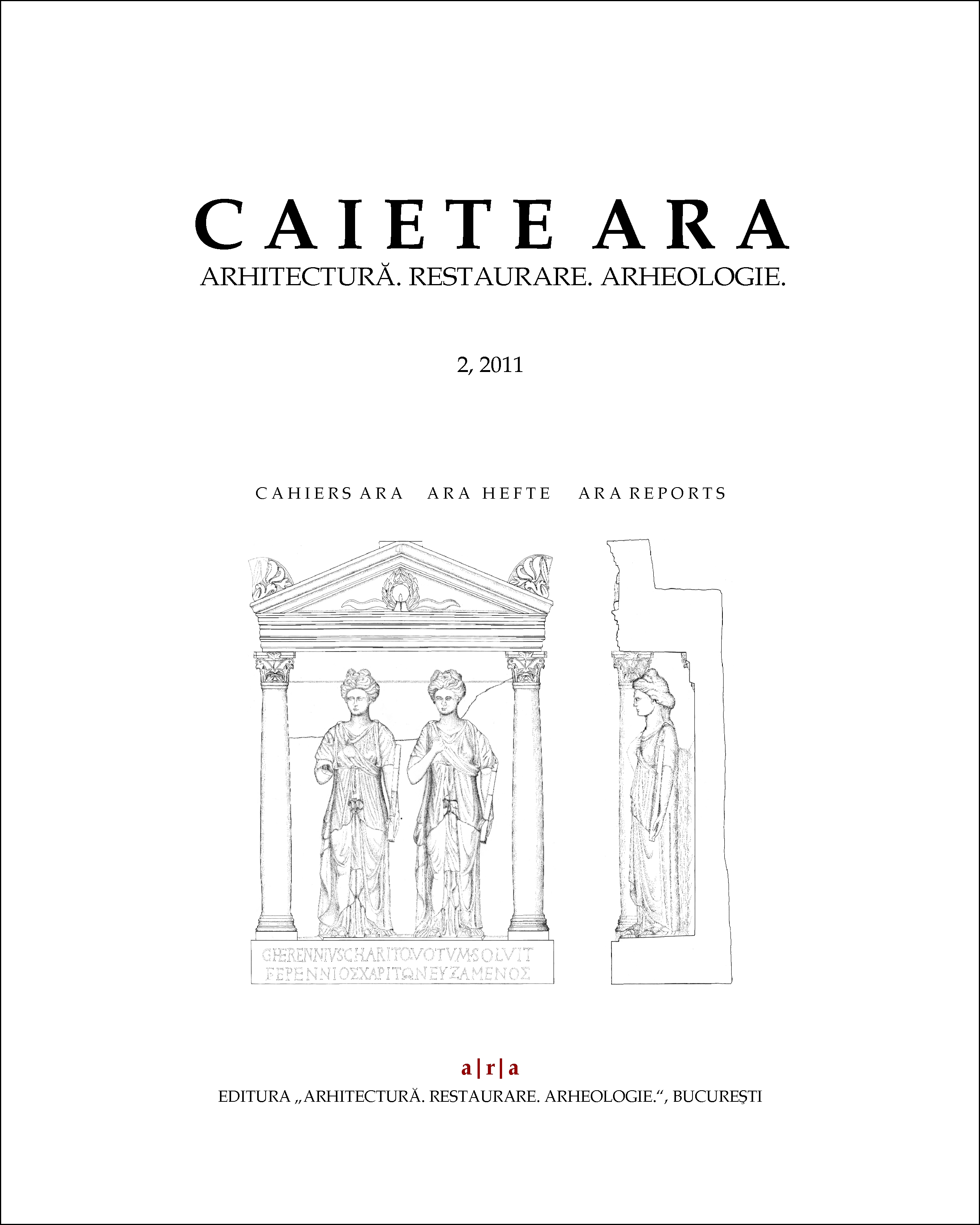Un posibil mormânt al primului mitropolit al Țării Românești - Iachint de Vicina (1359-1372)
A possible grave of the first Bishop of Țara Românească - Iachint de Vicina (1359-1372)
Author(s): Maria-Venera RădulescuSubject(s): Architecture, Visual Arts, 13th to 14th Centuries
Published by: Editura "Arhitectură. Restaurare. Arheologie"
Keywords: recumbent effigy; metropolitan archbishop; church; surplice; epitrachelion; phelonion; kamelavkion; crosier;
Summary/Abstract: A valuable Middle Age Romanian art monument, the recumbent effigy has its provenance from the “Saint Nicholas” Princely Church of Curtea de Argeş. To date, several scientific papers inferred that the gravestone belonged to the tomb of Prince Radu I (ca 1377 - ca 1383) or maybe of Prince Dan the 2nd (1420 - 1421). The bas-relief is carved in chalk and has the dimension 149.5 cm / 73 cm /33.5 cm. The sculpture shows a lying deceased person, with his hands on his chest. His face is surrounded by long hair and beard. The stone is cracked and the lower part is missing. Damaged and worn away, the recumbent effigy has lost the details that could have made its identification easier. This paper presents arguments in favor of identifying the recumbent effigy with the gravestone of the first Metropolitan Archbishop of the RomanianCounty, Iachint of Vicina (1359-1372). Specific religious vestments such as surplice (with a short collar round the neck), epitrachelion, phelonion (with luxurious embroideries on the chest and shoulders, and its bottom edge held on the left forearm, in a common gesture of a priest during the religious service), kamelavkion (with a long veil reaching to the ankles), reassemble the formal vestments that the first Metropolitan Orthodox Archbishop of Romanian County would have been buried with, in accordance with the religious customs. The Metropolitan Archbishop holds the crosier under his right arm. In addition, his head, covered with a “kamelavkion”, lies down on a carved piece of stone. In this connection, a brick is set under the deceased person’s head according to the monk burial customs, to date. The damaged condition of the recumbent effigy doesn’t allow the identification of certain details of the religious vestments of a high rank archbishop. However, one can’t rule out the possibility that the burial ritual of a Metropolitan Archbishop of that time included only the vestments and ornaments present on the recumbent effigy, or that the craftman left out the carving of some pieces of clothing. On the right side of the gravestone, one can see an inscription with Cyrillic letters, “ПР ГЕРГЕ” - the name of the craftsman and his emblem. This is the first registration of a craftsman stone carving in Romanian County. In conclusion, the bas-relief, even in its current state of preservation, is supporting the hypothesis that the recumbent effigy is representing a high rank archbishop. This individual couldn’t have been any other than the first Metropolitan Archbishop of UngroWallachia, Iachint of Vicina (1359 - 1372), buried in the church where he has served as a high priest. The “Saint Nicholas” Royal Church of Curtea de Argeş could, therefore, legitimately reclaim the title of the first Metropolitan Orthodox Church of the Romanian County. The recumbent effigy should be relocated to its initial site, at least in a form of a replica. This could be helpful in restoring the spiritually charged atmosphere from the second half of XIVth century.
Journal: Caiete ARA
- Issue Year: 2011
- Issue No: 2
- Page Range: 133-150
- Page Count: 18
- Language: Romanian
- Content File-PDF

